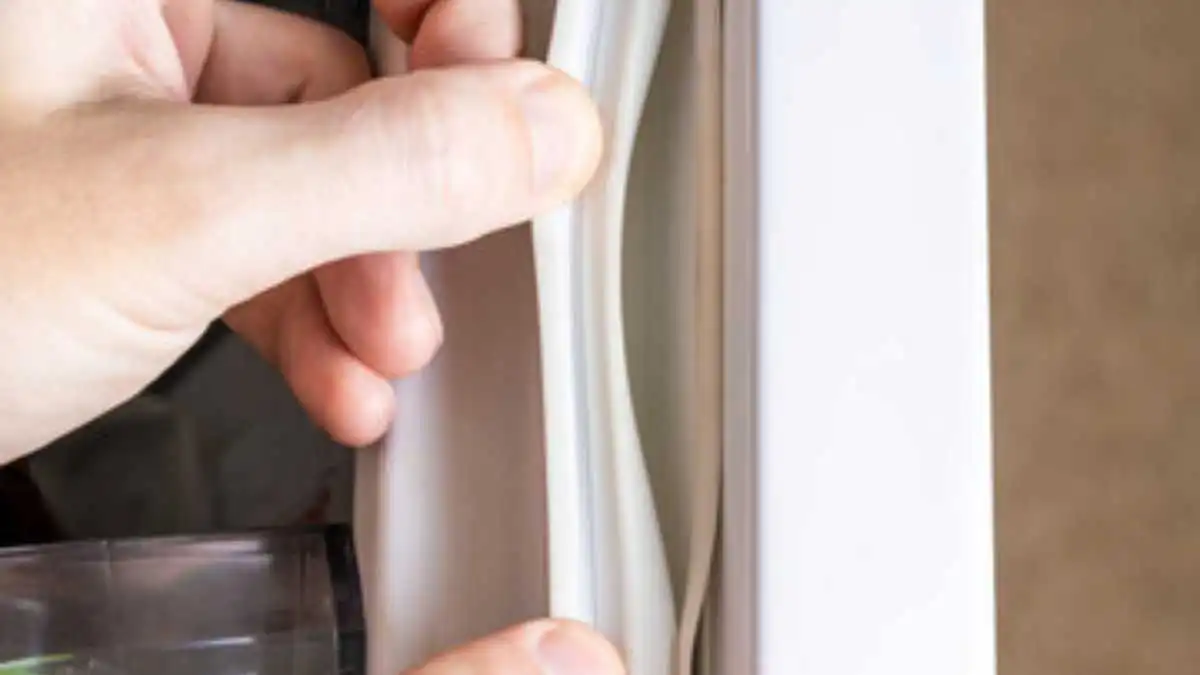GENERAL
How to Choose the Right Refrigerator Gasket for Maximum Efficiency

Refrigerator gaskets may seem like minor components, but they play an essential role in keeping your refrigeration units efficient, your energy bills low, and your food fresh. A well-functioning gasket creates an airtight seal that keeps cool air inside, preventing warm air from seeping in and reducing the refrigerator’s energy consumption. Choosing the right gasket is critical for both commercial and residential refrigeration systems. In this guide, we’ll explore what to look for when selecting a refrigerator gasket and how to ensure it meets your specific needs.
Table of Contents
1. Understand the Role of Refrigerator Gaskets
Refrigerator gaskets are made of flexible rubber or plastic and are designed to create an airtight seal around the door. This seal keeps the cold air inside, allowing the refrigerator to maintain a consistent temperature without overworking the compressor. When gaskets wear out or become damaged, they allow warm air to enter the unit, making the refrigerator work harder to stay cool. This results in higher energy usage and, eventually, increased costs.
Why Gaskets Matter for Efficiency
Maintaining a tight seal is key to reducing energy consumption. Even a small gap in the gasket can lead to significant energy loss, increasing your utility costs. In commercial settings, where refrigeration units are used continuously, efficient gaskets are especially important for managing operating expenses.
Choosing a high-quality gasket from reputable providers, such as Reliable Gaskets USA, ensures that your refrigeration system performs optimally and remains energy efficient.
2. Types of Gasket Materials: Finding the Right Fit
Refrigerator gaskets come in various materials, each suited to different conditions and levels of durability. When selecting a gasket, consider factors like temperature, environmental exposure, and maintenance needs. Here are some of the most common materials:
PVC (Polyvinyl Chloride)
PVC is a popular choice for refrigeration gaskets due to its flexibility and affordability. It provides a reliable seal and is suitable for most general-purpose applications. However, PVC may not be the best option in extremely hot or cold environments, as it can lose flexibility over time.
- Best For: Standard commercial and residential refrigerators in moderate climates.
- Considerations: PVC gaskets are affordable and widely available but may require more frequent replacements in extreme temperatures.
EPDM (Ethylene Propylene Diene Monomer)
EPDM is a durable rubber material known for its excellent resistance to weather, temperature extremes, and environmental factors. It’s a versatile option for commercial settings where refrigerators are exposed to varying conditions.
- Best For: Industrial refrigerators, freezers, and environments with high humidity or temperature fluctuations.
- Considerations: EPDM gaskets are more durable than PVC and provide a longer-lasting solution, making them cost-effective in the long run.
Silicone
Silicone gaskets offer superior resistance to both high and low temperatures, making them ideal for a range of applications. Silicone maintains its flexibility and sealing capabilities over a wide temperature range, which is particularly beneficial for freezer units and cold storage.
- Best For: Freezers, cold storage units, and environments where temperature control is critical.
- Considerations: Silicone gaskets are typically more expensive but offer excellent durability and performance in extreme temperatures.
When choosing a gasket material, consider the specific conditions of your refrigeration unit and select a material that balances durability with cost-effectiveness.
3. Measuring for a Proper Fit: Accuracy Matters
An effective gasket needs to fit snugly around the door, creating a uniform seal without gaps or inconsistencies. Accurate measurements are essential when replacing gaskets, as a poorly fitted gasket can lead to air leaks, reducing efficiency and increasing energy costs.
Steps for Measuring a Gasket
- Remove the Old Gasket: If you’re replacing an existing gasket, start by removing it from the door. Take note of its placement and how it’s secured, as this can help with installing the new gasket.
- Measure the Dimensions: Use a tape measure to determine the length, width, and thickness of the gasket. Be precise with your measurements to ensure a proper fit.
- Check the Gasket Profile: Many gaskets come in different shapes, known as profiles. Match the profile of the old gasket to the new one, or consult with a supplier if you’re unsure.
Ordering the right size is critical to ensuring a strong seal. If you’re uncertain about measurements, work with professionals who can help verify the dimensions and provide the appropriate gasket size for your needs.
4. Consider the Environment and Usage
The environment in which your refrigerator operates can have a significant impact on the type of gasket you need. Gaskets used in commercial kitchens, for example, are often exposed to higher levels of heat and humidity compared to those used in residential refrigerators. These conditions can affect the gasket’s durability and effectiveness over time.
Factors to Consider
- Temperature Extremes: If the refrigerator is located in an area that experiences extreme temperatures, such as a warehouse or commercial kitchen, opt for a gasket material that can withstand these conditions.
- Humidity Levels: High humidity can cause certain gasket materials to deteriorate faster. Silicone or EPDM gaskets are typically more resistant to humidity, making them suitable for wet environments.
- Frequency of Use: Refrigerators that are frequently opened and closed, like those in a restaurant, require more durable gaskets that can handle repeated use. In such cases, choosing a high-quality, resilient material is essential.
By evaluating the operating environment, you can select a gasket that meets your specific needs, ensuring both durability and efficiency in demanding conditions.
5. Installation Tips for Optimal Performance
Installing a refrigerator gasket may seem straightforward, but proper installation is essential to ensure a tight seal. If the gasket isn’t installed correctly, even a high-quality material won’t provide the intended benefits. Here are some tips to ensure a proper installation:
Tips for Installation
- Warm the Gasket: Gaskets are more flexible when they’re warm. Place the gasket in warm water for a few minutes or leave it in a warm room to make it easier to handle.
- Align Carefully: Position the gasket carefully along the door, making sure it aligns evenly around the perimeter. Avoid stretching or twisting the gasket during installation.
- Secure the Corners First: Start by securing the corners, which helps keep the gasket in place as you work around the door. Check that the corners are properly aligned before attaching the sides.
- Use a Hair Dryer for Adjustment: If the gasket doesn’t sit flat, use a hair dryer on low heat to gently warm it. This makes it easier to press the gasket into place and create a secure fit.
If you’re unsure about installing the gasket yourself, consider working with a professional or consulting with your supplier. Companies like Reliable Gaskets USA can provide guidance on installation techniques to ensure you get the best performance from your gasket.
6. Routine Maintenance to Extend Gasket Lifespan
Once your gasket is installed, regular maintenance is key to prolonging its lifespan and maintaining your refrigerator’s efficiency. Gaskets are exposed to constant wear, so routine cleaning and inspections can help you catch issues early and avoid costly replacements.
Maintenance Tips
- Clean Regularly: Dirt, grease, and grime can accumulate on the gasket, causing it to deteriorate over time. Clean the gasket with mild soap and water every few weeks to prevent buildup.
- Inspect for Damage: Check the gasket for cracks, splits, or areas that have started to harden. Promptly replace any damaged sections to maintain an airtight seal.
- Test the Seal: Close the refrigerator door on a piece of paper and try to pull it out. If the paper slides out easily, the gasket may need adjustment or replacement.
By incorporating these simple maintenance tasks into your routine, you can extend the life of your gasket and keep your refrigeration system running smoothly.
Conclusion: Choosing the Right Gasket for Efficiency and Performance
Selecting the best refrigerator gasket involves more than just choosing a material. It requires an understanding of your refrigeration unit’s operating conditions, accurate measurements, and proper installation. By considering these factors, you can choose a gasket that not only creates a strong seal but also contributes to energy savings, reduced maintenance costs, and a more efficient system overall. With a reliable supplier like Reliable Gaskets USA, you can be confident that you’re investing in a high-quality gasket tailored to meet your needs. By making informed choices, you’ll enhance your refrigeration system’s performance, ensuring it operates efficiently for years to come.
-

 GENERAL2 months ago
GENERAL2 months agoUncovering the World of кинокрадко: The Dark Side of Film Piracy
-

 GENERAL2 weeks ago
GENERAL2 weeks agoUnveiling the Art of преводсч: How Translators Bridge Language Barriers
-

 YOGA1 year ago
YOGA1 year ago4 Person Yoga Poses for Beginners
-

 GENERAL2 months ago
GENERAL2 months agoThe Journey of iamnobody89757: From Anonymous User to Internet Sensation


























